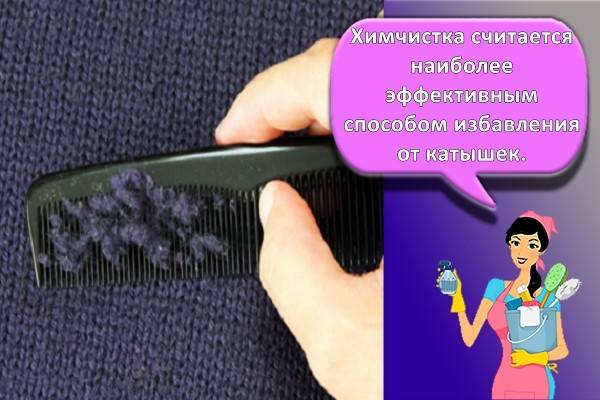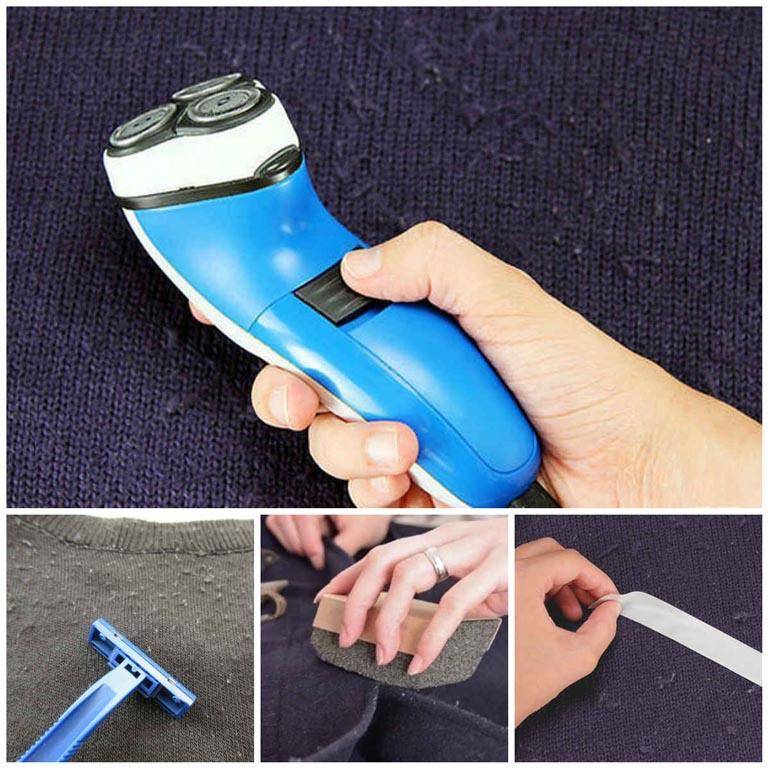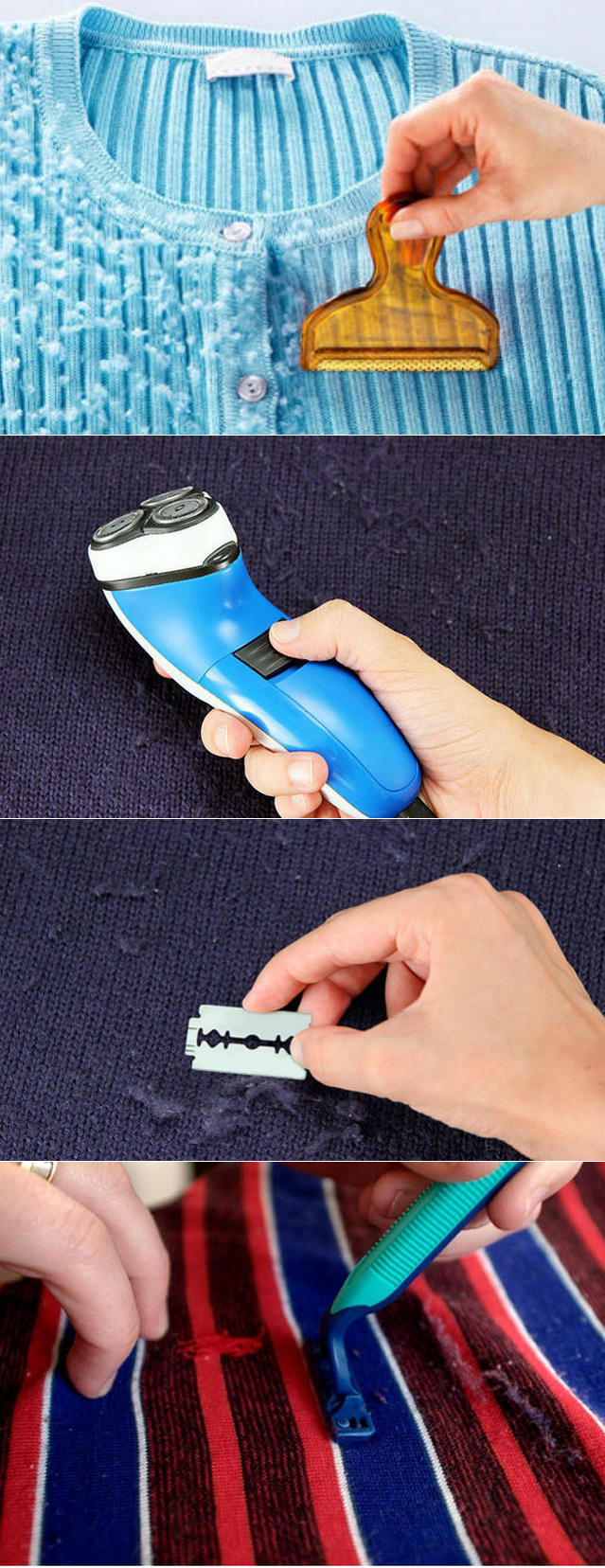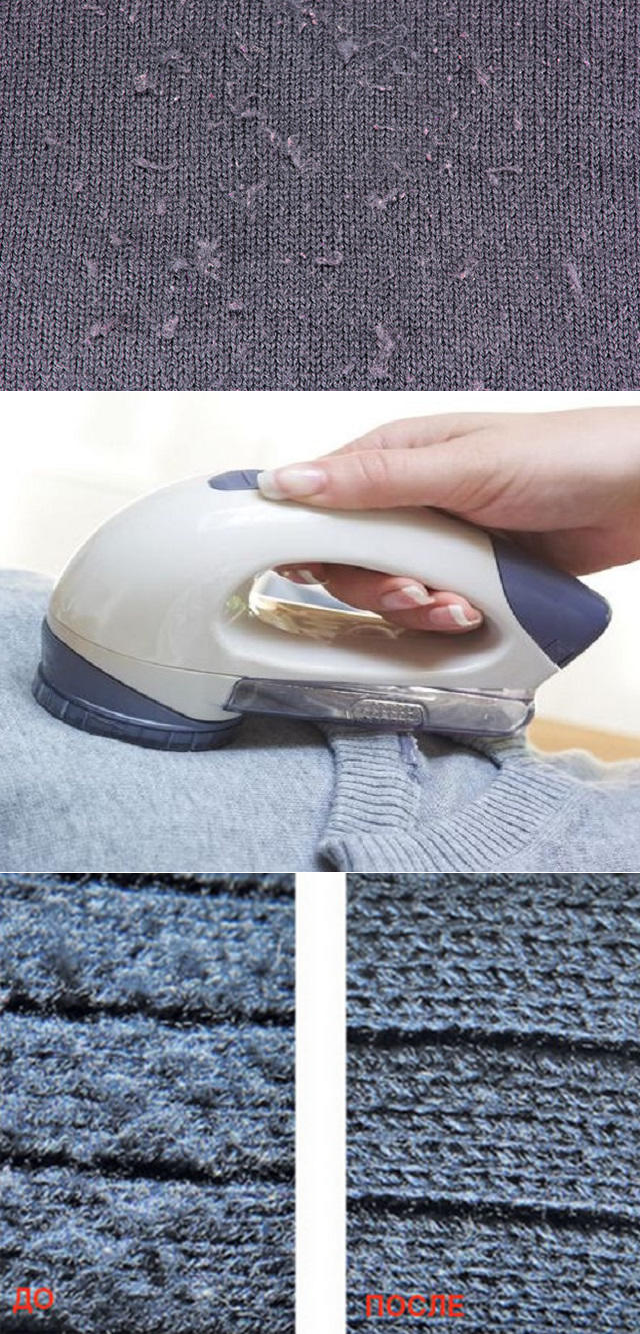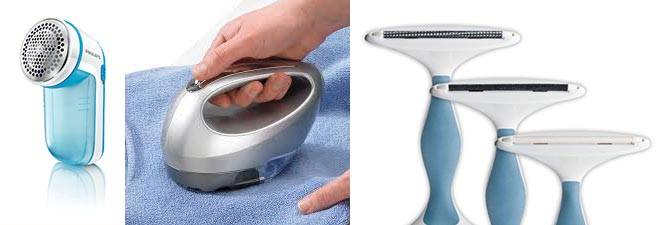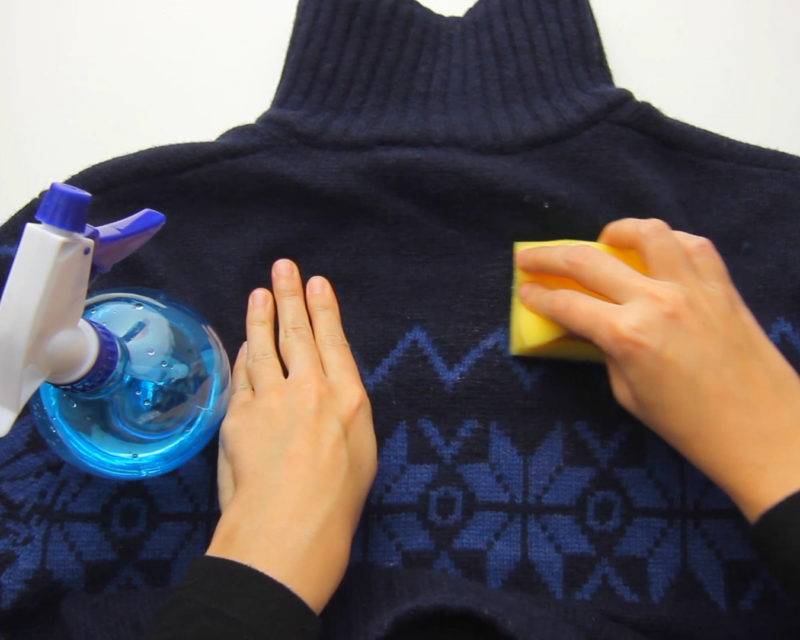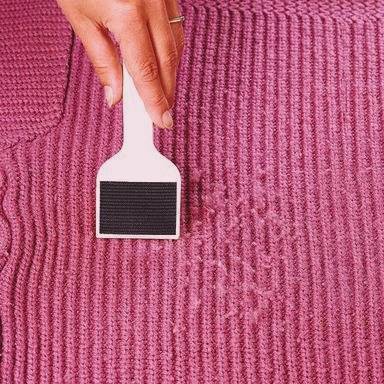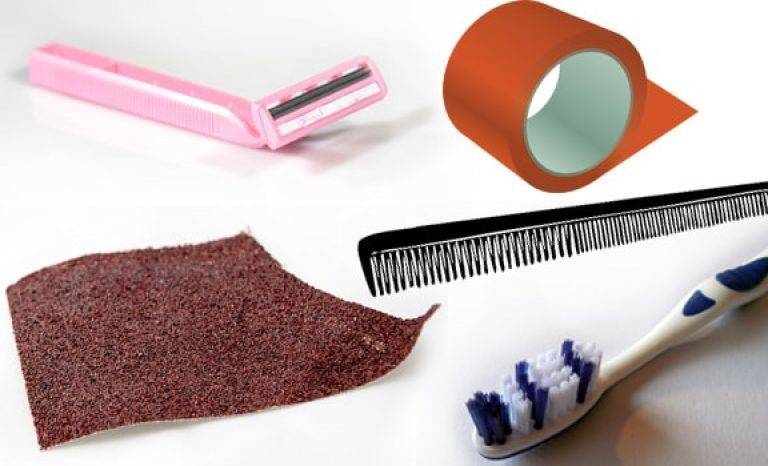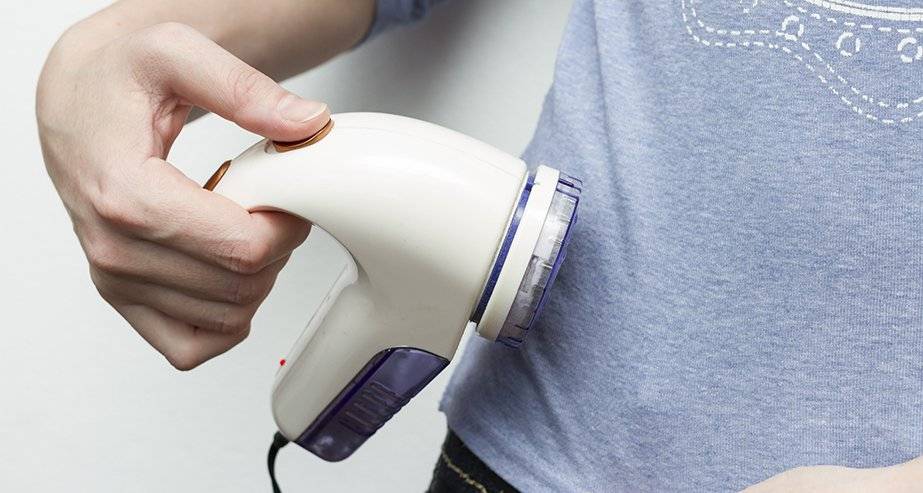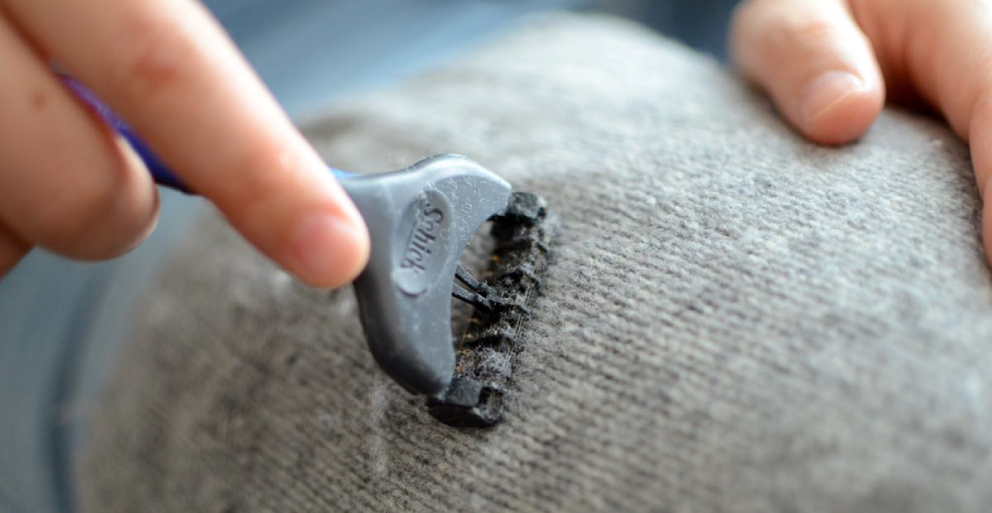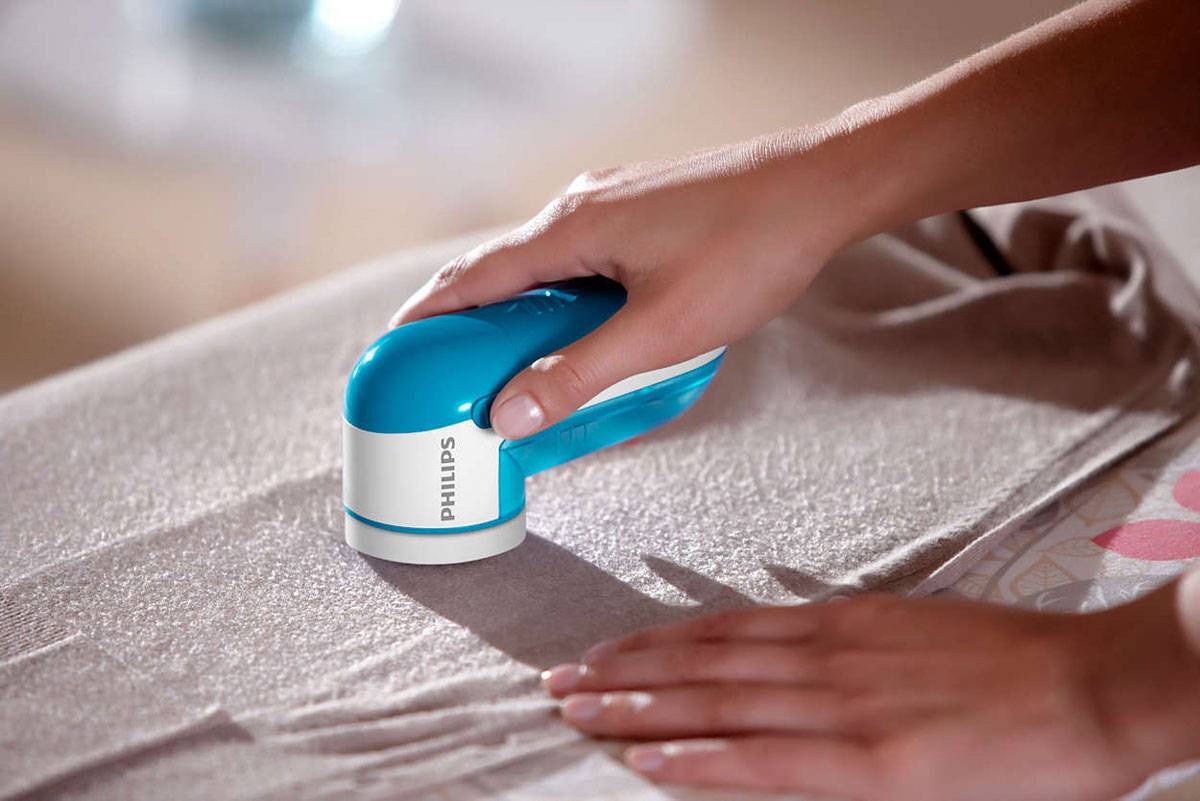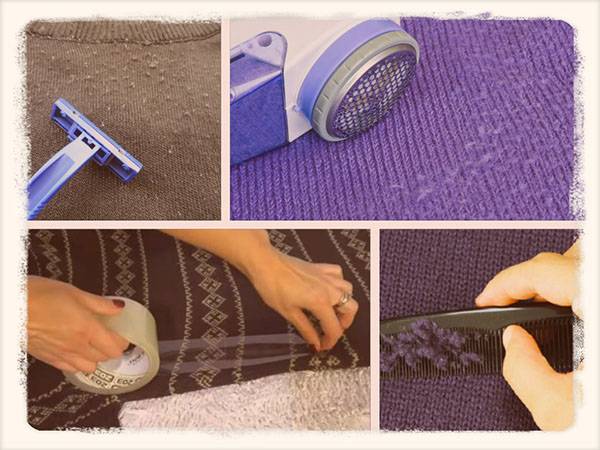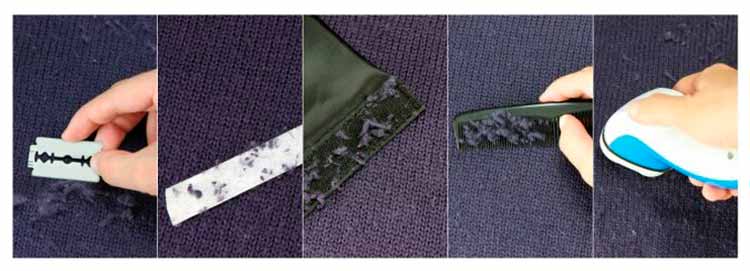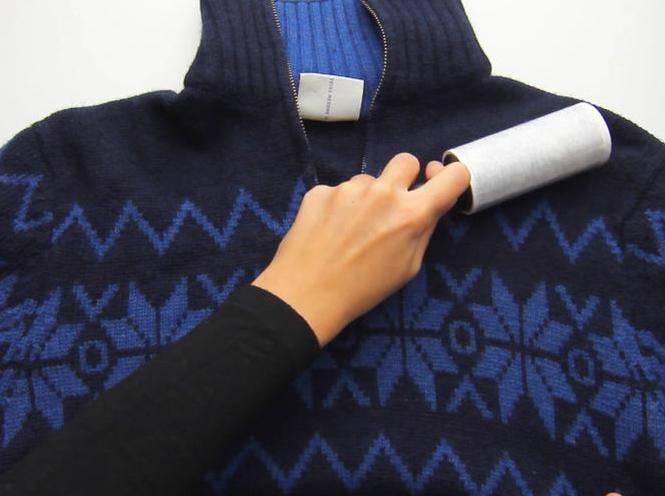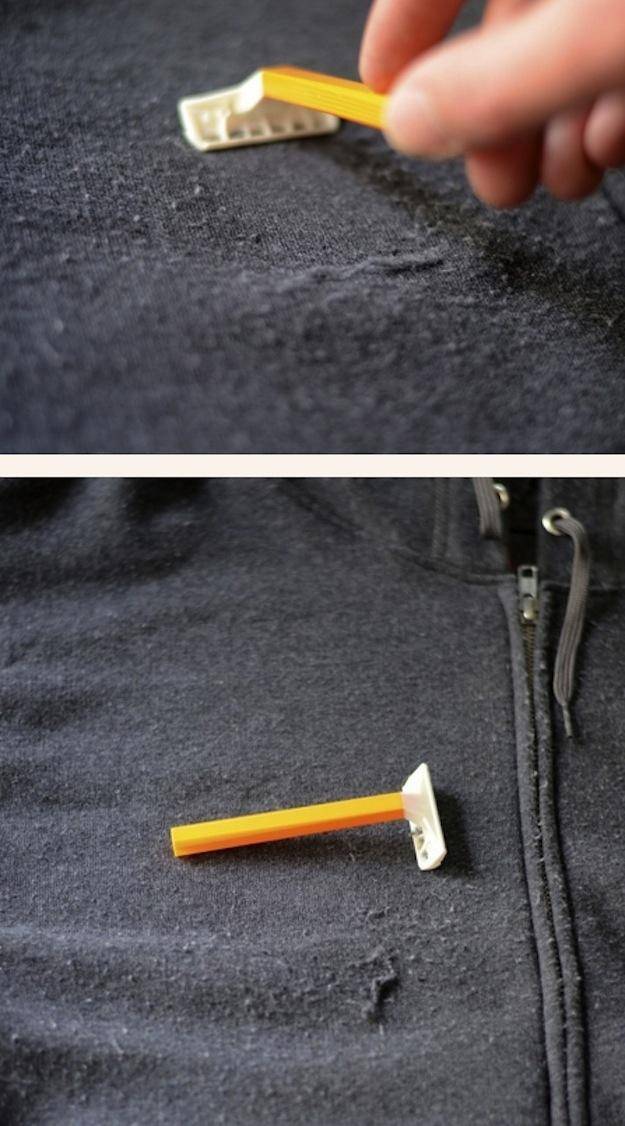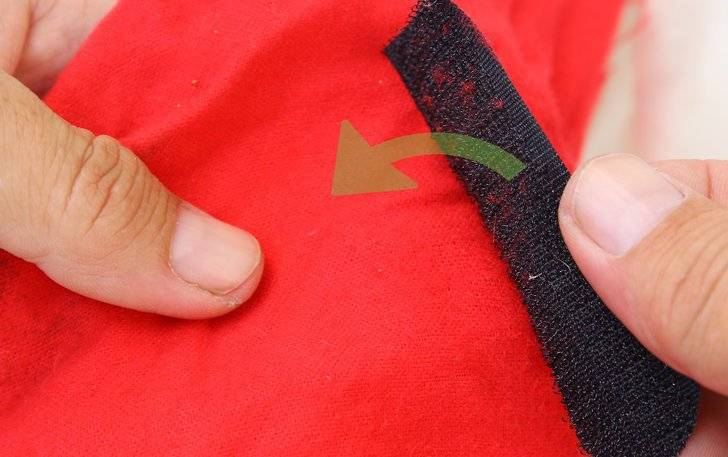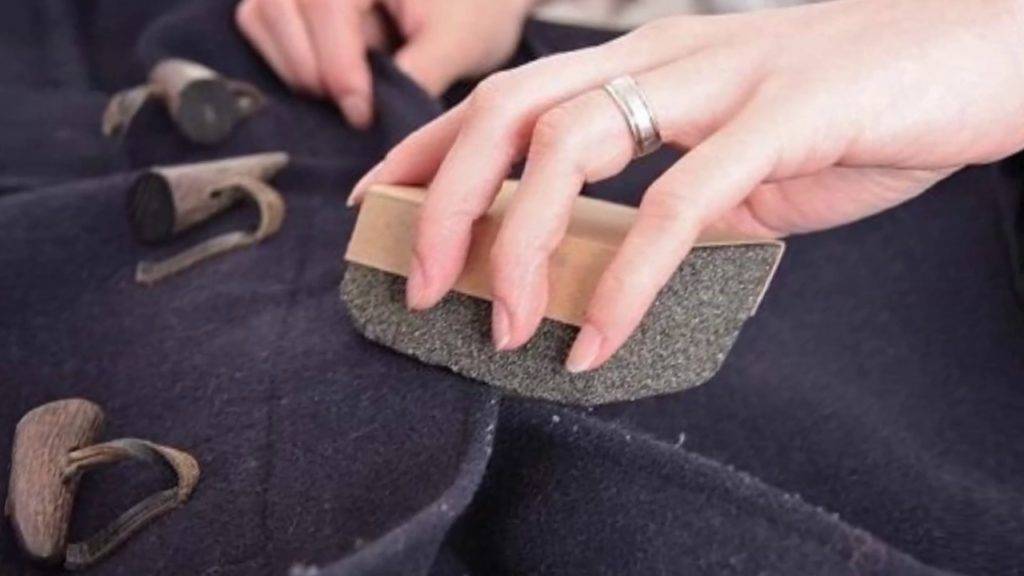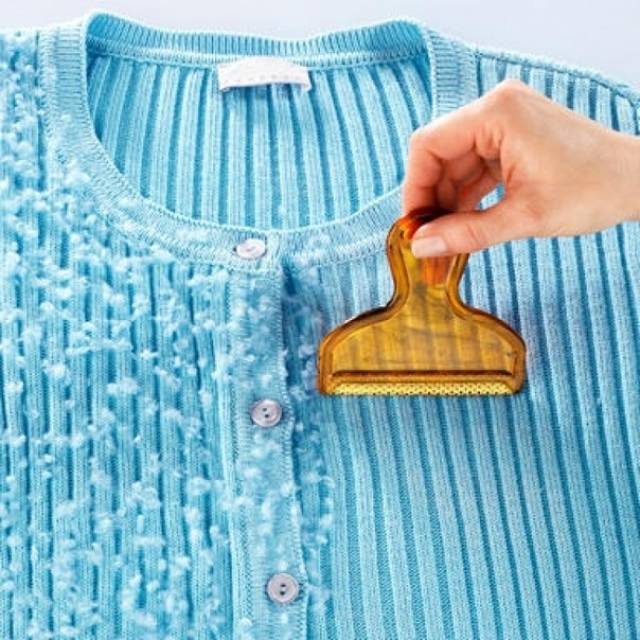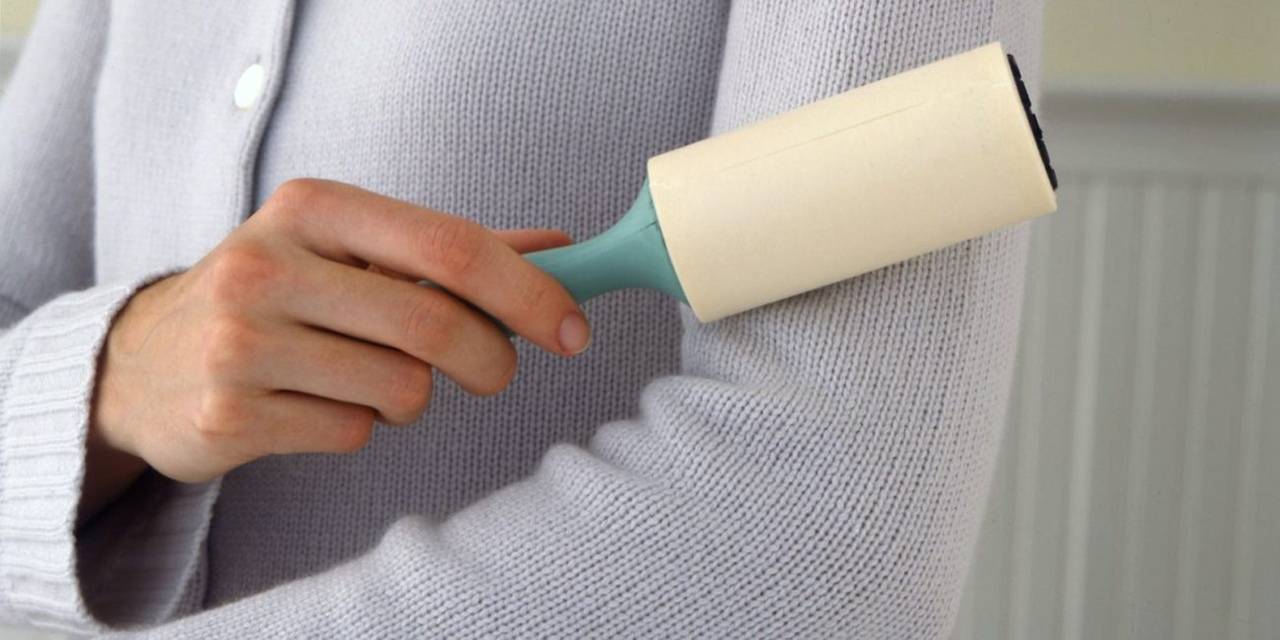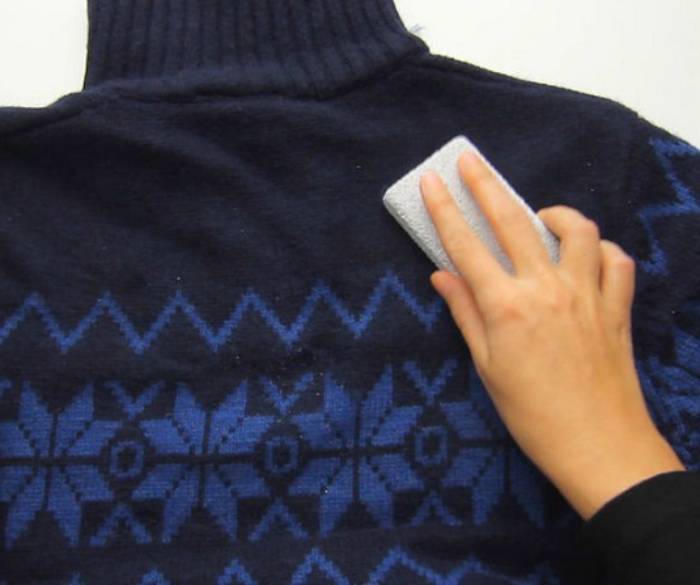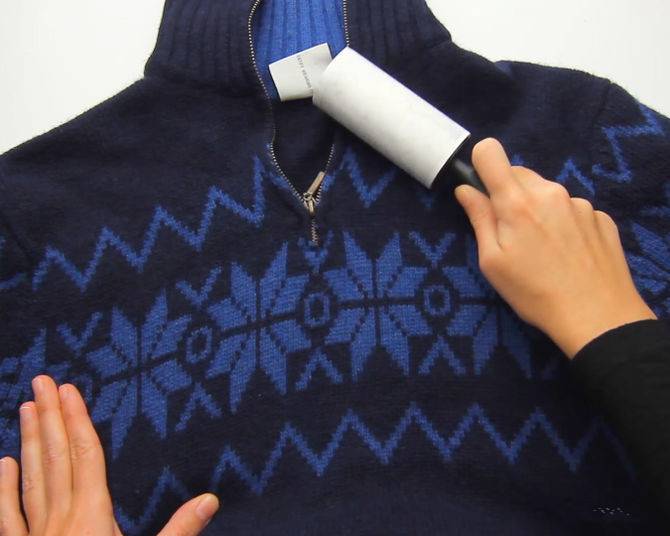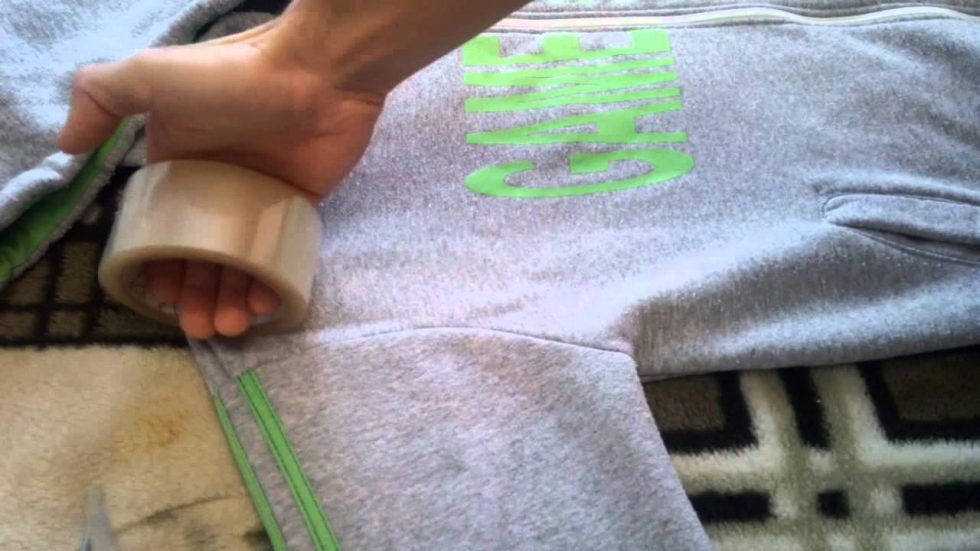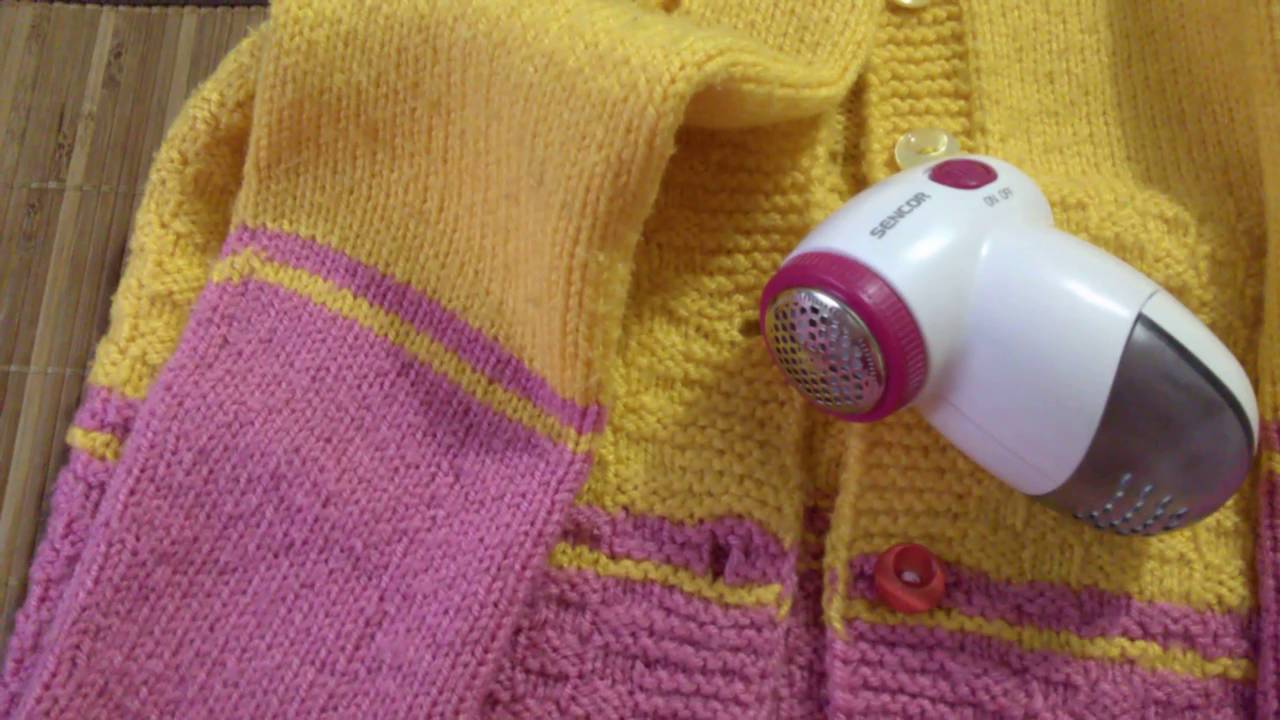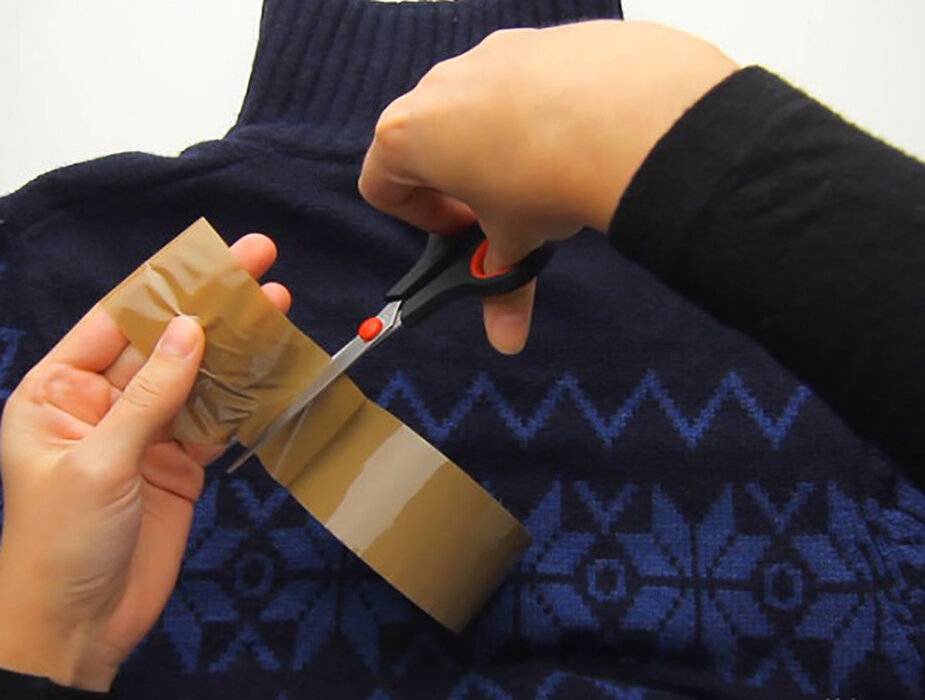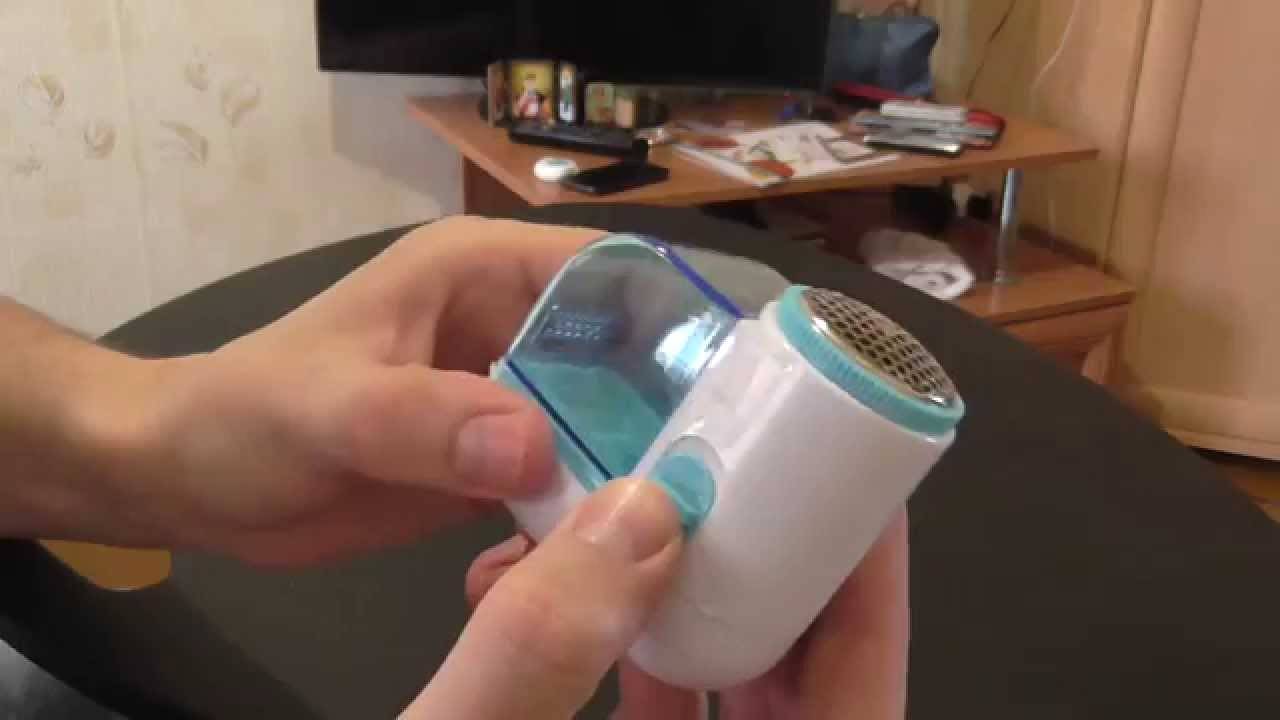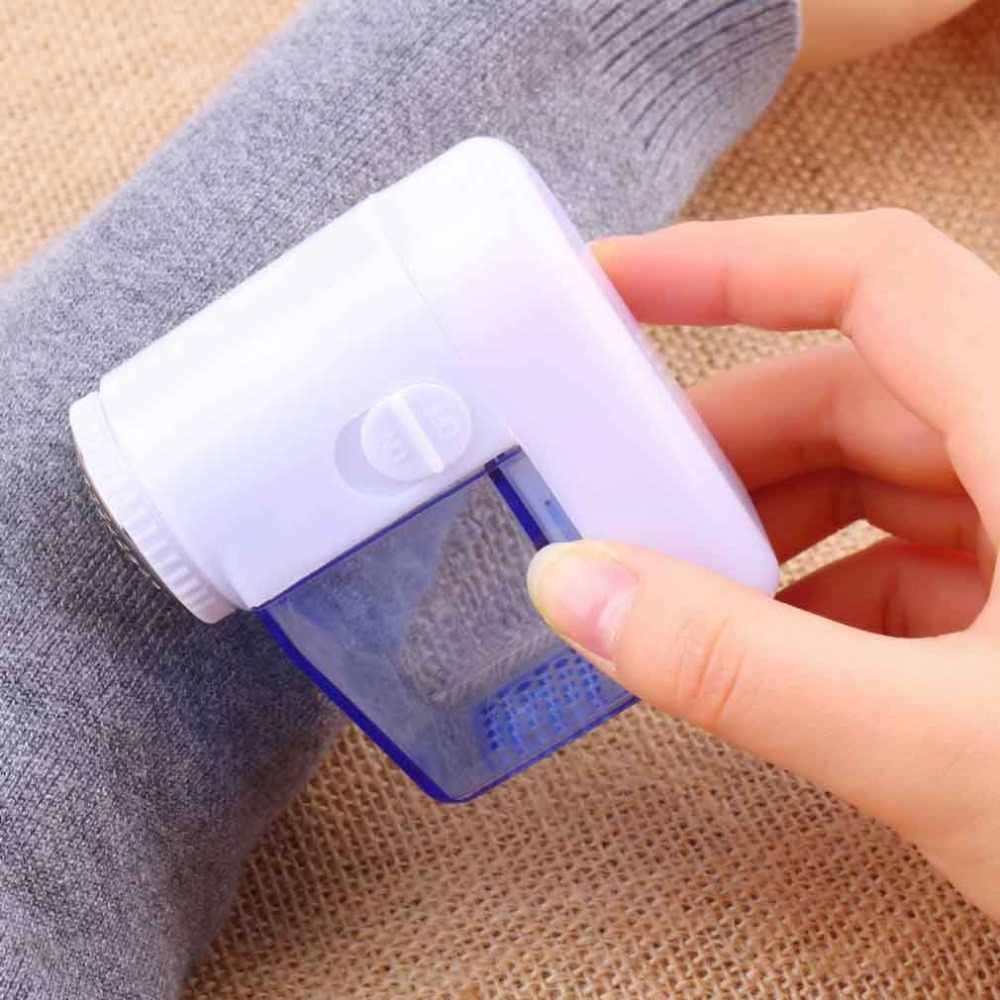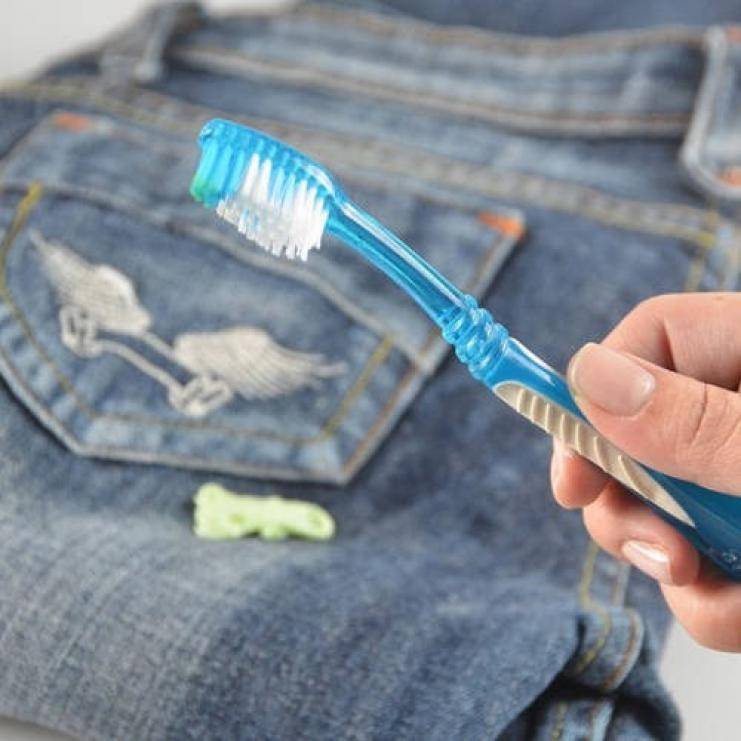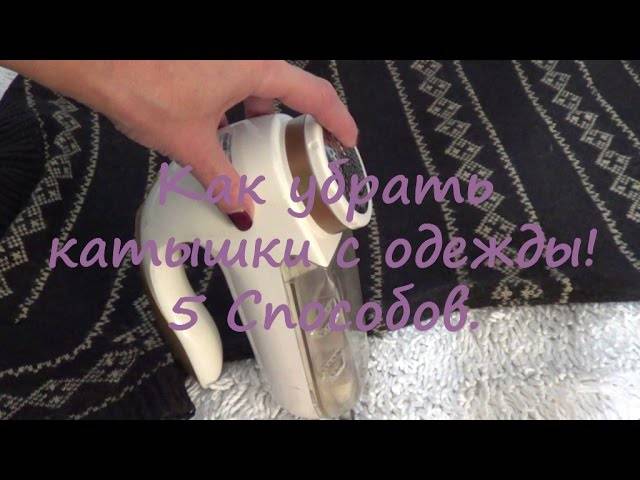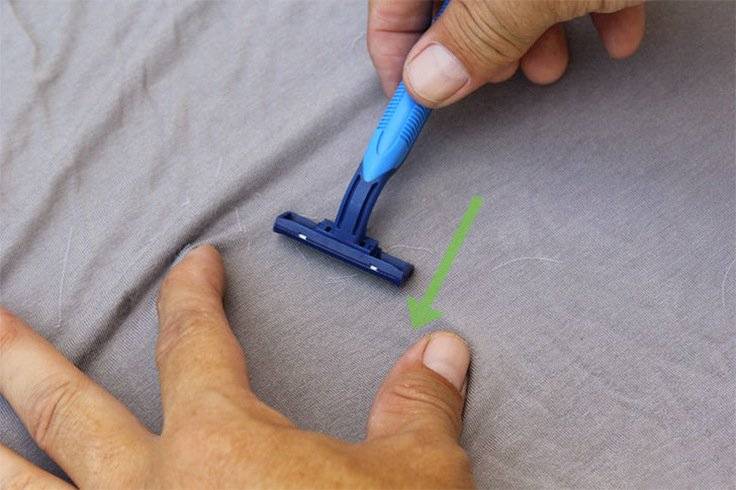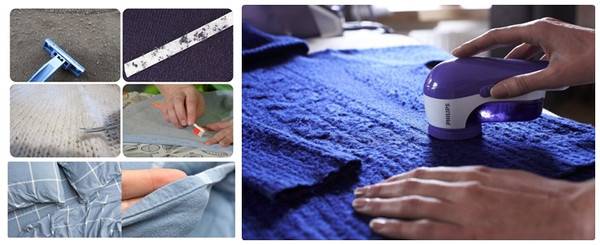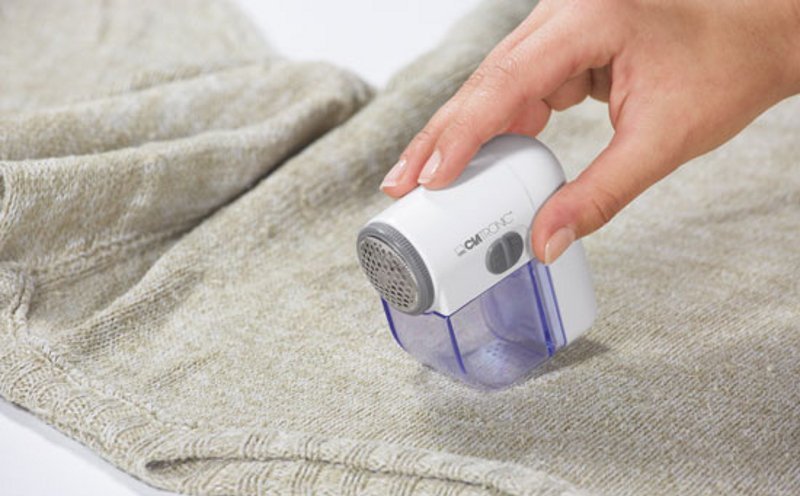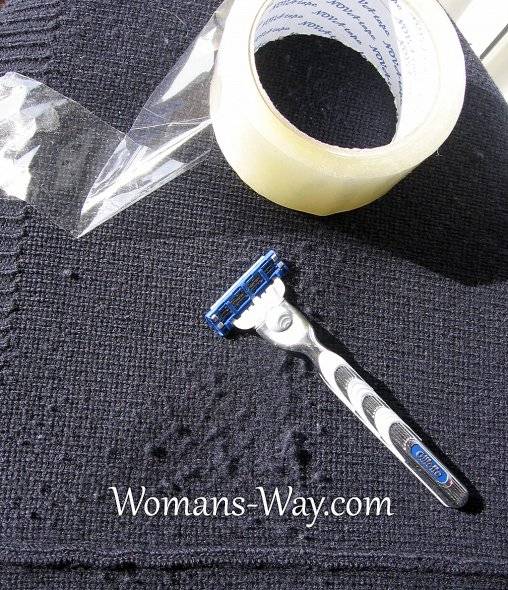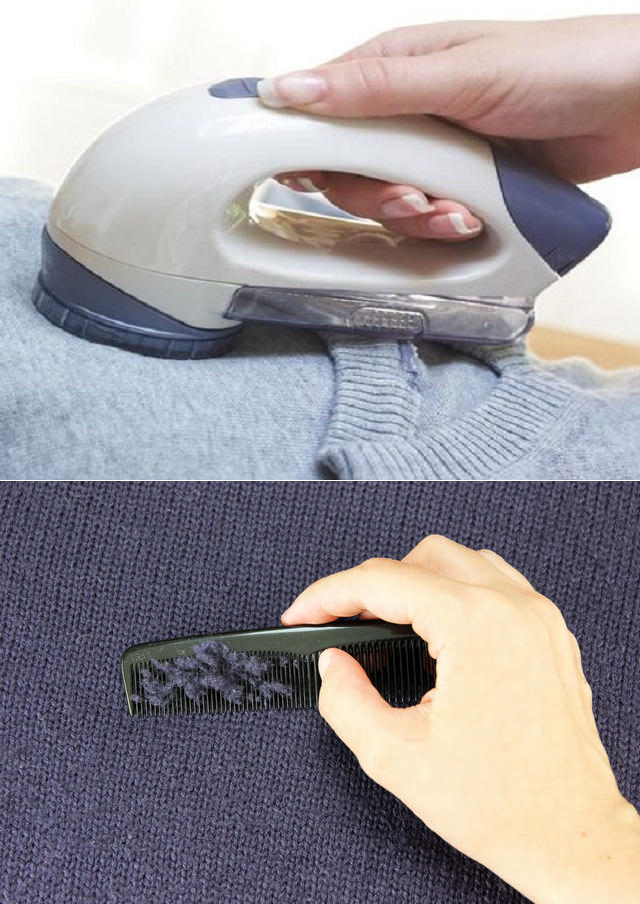Why do pellets appear on the coat?
Whatever measures the manufacturer takes, the appearance of pellets is inevitable, and any coat, be it made of drape, wool or cashmere, one way or another, will lose its original external gloss - it's a matter of time. At first, the appearance of pellets will be maximal, then, as free fibers fall out of the texture of the fabric, this process will decrease somewhat. But it will not be possible to completely stop it.
Natural fabrics are less susceptible to pilling. However, pure wool or down in sewing a coat is rarely used. This is mainly due to its shrinkage after washing, and therefore the addition of synthetics is a necessary condition so that the coat does not shrink after wet cleaning.
And if after tangling clean wool fibers, the pellet fell off naturally, then the presence of stronger artificial threads does not allow doing this - the hair ball will reliably hang on the coat on a synthetic "leg".
Pills appear for one single reason - abrasive effects on the fabric and the subsequent entanglement of its fibers. Some are less susceptible to the pilling process, such as cloth, tweed or silk; others are more: polyamide, polyester or elastane. Blended fabrics, where the ratio of artificial and natural fibers is approximately the same, are highly pilling.
But there are several more reasons for aggravating the purity of clothes:
- Violation of the recommendations for wearing a coat - you should not wear your clothes. It is necessary to take small breaks every 1-2 weeks - 24 hours will be quite enough for the fabric to "rest" and the fibers to straighten out. With frequent use, the material stretches, shorter fibers from the texture of the fabric "come out" and get tangled.
- Backpack and coat are incompatible. Eliminate sharing of these things. Suede bags also have a negative effect on the fabric - they rub it over.
- Improper coat care. If the label of the garment allows it to be wet cleaned at home - never use detergents and machine wash - only mild detergents and gentle hands.
- Storing the coat in the off-season also affects its appearance - use special covers - no contact with other clothes.
How to reduce the risk of lumping?
All methods of cleaning things from pellets take either time, or effort, or money. To avoid costs, try to prevent flaws. What is needed for this:
Look at the washing and care label before washing. Some items can only be washed by hand in cool water.
Do not boil or wash in water above 40 degrees.
To avoid lumps, do not use bleach.
It is better to use conditioner for washing. It softens the fibers and prevents them from tangling.
Choose the correct detergent for the type of fabric. For example, woolen garments cannot be washed with all-purpose powders.
Pumps will form if fabrics with different compositions are machine washed. For example, if you load a fluffy item (mohair, acrylic, wool) with knitwear, lumps will immediately form on it.
If the sweater or blouse has metal inserts, it should not be washed along with the rest of the clothes. Details can also provoke pellets.
Do not run an extra rinse. As we know, excess friction is useless. For the same reason, set the spin to no more than 600 rpm.
Do not wash your woolen garments on the automatic mode, it is better to do it by hand. Do not twist the thing!
Straighten the garment gently before drying.Be careful, too fast movements can damage wet fibers.
Do not dry in hot sunlight or near radiators or heaters.
Lumps will not form when ironing delicate fabrics through a thin, damp cloth.
Take a closer look at how the thing behaves when worn. It is quite logical that when rubbing against the belt of a bag, for example, nasty lumps will soon appear in this place.
If the pellets do start to appear, try to remove them immediately. It's much easier to get rid of them this way.
And the last piece of advice, banal, but ironclad. Don't wear the same sweater all the time. Accordingly, you do not have to wash it often. Thus, you will avoid the appearance of defects from both wearing and washing.
Using the clumping clipper
Electronics stores offer special tools for removing nodules. You can complete the task with the Gleener brushes. They are safe and convenient to use, they do not spoil the thing when cleaning.
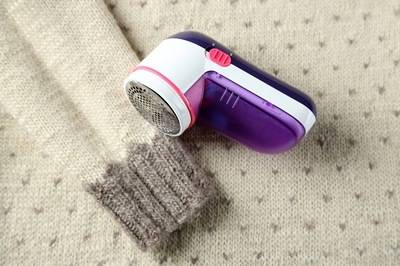
The machines allow you to adjust the height of the blades. Thanks to this, you can choose the optimal parameters depending on the texture of the fabric. The cut glomeruli are dropped into a special container during cleaning. It needs to be cleaned periodically.
The cars are comfortable and safe. Therefore, the owner of expensive outerwear need not worry that the product will become unusable after such processing.
Tips for choosing a fixture
The diameter of the cleaning head is important. The larger this parameter, the faster the cleaning will take place.
Also, the weight and shape of the device are of no small importance.
Bulky, overly heavy models are inconvenient to use. This is especially noticeable when removing pellets from large items.
How to use
The procedure for using a special machine is simple. According to the instructions, you need:
- insert batteries into the device;
- turn on the device;
- adjust the required height, which is optimal for the removal of glomeruli;
- lay out clothes on a flat surface;
- walk the device over the fabric, but do not press it against the clothes;
- empty the container.
Causes of occurrence
There is an opinion: if threads and pile are gathered in lumps on clothes, this is an indicator of the poor quality of the goods. The opinion is fundamentally wrong. Fabric rolls due to structure and usage. The reasons are commonplace.
- Friction. Trousers between the legs, tight jeans or leggings on the calves, sweaters on the sides, outerwear on the shoulders suffer - those places that often rub (with elbows when walking, shoes, bags).
- Wash at too high temperature.
- Mixed fibers or loose thread in the fabric. Woven nets, half-woolen things, knitted clothes from threads with a spine. Hand or machine knitting, acrylic or natural fibers - no difference. With a weak adhesion of the fibers to each other, they form lumps during friction. If you wash a natural knitted sweater at a large temperature difference in a typewriter, it will turn into one big "spool", falling into something completely incomprehensible.
- Decor. Brooches, straps, rivets, zippers, often touching the fabric, gradually pull out the extreme fibers, scratch the fabric and provoke rolling. Even a tarpaulin can roll in this pattern.
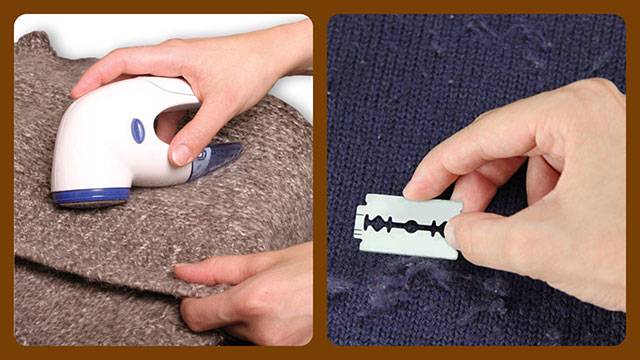
Features of getting rid of pellets from clothes
The variety of shapes and styles of wardrobe items dictates the selection of the most correct cleaning methods. For example, embroidery and decorative accessories are very capricious elements and do not tolerate rough handling.
Wool coat
Textured textiles are perfectly cleaned at home using sharp scissors. Of course, this option takes a very long time, but it guarantees increased protection of the fabric. For very dense fabrics, the coat can be cleaned with a pumice stone or sandpaper.
Sweaters
In any cold, knitted sweaters keep warm, often stretching and rolling up strongly when rubbed.The ideal option for putting things in proper shape is a machine that quickly and efficiently removes spools. In the absence of this miracle of technology, you can use a hair comb, a sponge for washing dishes, sharp nail scissors
Important! To avoid the formation of stretch marks, it means to carry out the procedure very carefully.
Knitted sweaters
Often, polyester is used for the manufacture of sweatshirts, which requires careful maintenance. Use a fine-toothed comb, sponge, or washcloth to remove annoying threads. Movements should be carried out smoothly, slowly, without missing a single problem area. During the cleaning process, the brush or comb must be systematically cleaned of accumulated lumps.
Hats
The most annoying pellets "live" on hats, while they come into contact with hair, dust particles and dandruff. To get rid of the whole debris, it is best to use a roll with duct tape or duct tape.
Removing from pants
Pants often rub against the bag, or roll between the legs when walking. Cutting off the threads from the fabric is dangerous because the material will quickly become thinner, and unexpected embarrassment is possible. When using a razor, choose not sharp blades, but dull ones, otherwise there is a high risk of creating cuts on the fabric.
Pantyhose
It is more convenient to clean warm tights directly on the body, as the fabric stretches better. At the same time, the usual shaving is performed, only not the hair on the skin, but a pellet from the material. Use a razor or scotch tape effectively to ensure quick cleansing.
Noskov
Unsurprisingly, socks also tend to roll off due to frequent rubbing against the boots. Delicacy is not very important for this piece of clothing, but it is better not to wield the cleaning devices with harshness. Even a medical adhesive plaster, which has incredible tenacity to the surface, will come in handy.
Application of mechanical means
Every person who has encountered this problem at least once thought about how to remove the lumps without damaging the integrity of the material. For a long time in the world there has been a special apparatus for this, which safely removes this nuisance. It looks like an electric razor. The device works with a blade, which in working condition is in continuous motion, and cuts off all irregularities that fall into its zone of action.
To avoid injury, there is a special covering mesh that does not in the least prevent pellets from getting inside, while keeping the material intact. The manufacturers of these machines advise using them in order to remove the pellets from wool products. They are best at cleaning mohair and angora products. In order to avoid damage to the decorative elements of clothing, the level of the knives is adjusted in the machine. It is equipped with a special container for cut elements.
What causes pellets to appear on the fabric
- Wool and knitwear with the addition of synthetic fibers: balls appear very quickly on such products. After several washes and short wear, the appearance of the product leaves much to be desired. Woolen fabrics roll only at the initial stage of wear. Expensive varieties of wool that are used for sewing men's suits are generally not prone to rolling.
- Fabrics with very fine artificial textures (curtains, underwear) are prone to the formation of hard balls.
- Cotton is a dense woven material made from natural fibers that is not subject to pilling, but its cheaper counterpart "polycotton", which has recently been used for sewing bed linen, rolls down very quickly and loses its appearance.
- Polycotton is a cheap fabric that is a blend of cotton and polyester. It can be recognized by the “Cotton 100%” label.
The fabric should contain a minimum amount of man-made fibers. Of the synthesized materials, compositions with the addition of acrylic are least of all rolled. Loose knitwear is very susceptible to pilling.It is better to give preference to the densest knitwear as possible.
Despite the abundance of funds and recommendations on how to get rid of the pellets that appear on the surface of clothes, it is much easier to choose high-quality fabric for sewing. Preventing the pilling of the fabric will help the neat wear and delicate washing of the product, as well as the observance of the rules for the use of the fabric indicated by the manufacturer on the label.
It is believed that if pellets appear on the fabric, then it is of poor quality. In fact, the reasons are in the following factors:
- Improper clothing care. Items should be washed in water at the temperature indicated on the labels. The wrong choice of detergent will cause pellets to appear.
- Constant friction of the fabric. For example, on trousers from the side of the inner thighs, or on the side, where a handbag is often found when worn.
- Fabrics with loosely woven threads, or with long thread broaches. If you look closely at the fabric, pulling it "into the light", you will notice how tightly the threads adhere to each other.
- Mixed fabrics. Synthetics are thought to produce pellets faster, but weaving natural yarns also increases the chances of pellets.
- Twisted, stiff or tight threads of fabric.
There are several ways that help efficiently, quickly and inexpensively.
Dry cleaning
In dry cleaning, the pellets are removed using special means. The remover has a complex composition, but it helps to quickly cope with the problem. There is a similar product in household chemical stores, but it is not recommended to use it at home, as there are restrictions for some types of fabric. In order not to spoil the thing completely, it is better to contact a specialist.
Razor
Stretch the fabric slightly and gently shave off the spools. The razor can ruin the item, so it should not be used on woolen garments (angora, cashmere). But for knitwear - socks, knee-highs, stockings, tights, fit. The direction of movement is from bottom to top.
Scissors
The method is not the fastest, moreover, it requires accuracy. It is necessary to cut each spool separately, so the integrity of the product may be compromised. It is recommended to use scissors only for single large pellets on clothes.
Take a slice of bread and dry it well. Run a crouton over the desired area of the fabric, and then shake the excess crumbs. White bread is not recommended due to its fragility. By the way, the method will help to say goodbye to the pellets that have long appeared on clothes.
The method is effective at the initial stages of pellet formation. To clean the surface, it is necessary to gently move the hard side of the sponge several times over the damaged area. Pilling is removed by rubbing the dense, fleecy surface, the result is immediately noticeable.
Toothbrush
To remove the pellets on knitted items, including mohair and angora, use a soft-bristled toothbrush. Gently, but with persistent movements, "comb" the surface of the sweater or jacket until all the rolls are removed. After that, the item should be soaked in a weak vinegar solution (1 tablespoon for 4–5 liters), and dried on a flat surface. The product is deformed on the rope.
Razor
Use a mains-powered hair clipper to remove lumps on knitted garments when they do not fit snugly against the garment. At high speed, the "air" rolls are cut very quickly. The main thing is not to apply the device too tightly to the product.
Why do pellets appear?
The pellets themselves are fibers that have come off when rubbed and rolled into small balls. And the reason is most often the same - friction: on a belt, bag, machine drum, as a result of which lumps form on clothes. The rest of the factors are only concomitant, and sometimes aggravating:
- Low quality fibers. They separate from each other and roll off the easiest way. To determine the density of knitwear, you need to look at the thing in the light. An uneven structure indicates a low quality of the product. Such a thing was not worth acquiring, it would not be a pity to throw it away.
- Synthetics. More often and faster, pellets are formed on clothes with the addition of synthetics. She herself will not be able to roll in its pure form. But in combination with other threads, it just shows such a defect. Lumps can also appear on clothes made from 100% natural fabrics, but not so quickly.
- Marriage. Sometimes the formation of lumps is the result of a manufacturing defect. Fibers twisted improperly can contribute to the defect. It is difficult to recognize it, but it is possible. One has only to take a closer look. If the textiles are not uniform, excess threads appear on the surface - this is definitely a violation of technology.
- Washing errors. Hot water, boiling, a large number of revolutions during spinning, poor-quality powders - all this only provokes the appearance of lumps.
- Improper drying. Fibers can lose elasticity when dried in direct sunlight, near heating appliances.
How to remove pellets from clothes at home
You can get rid of matted lumps on your own without resorting to dry cleaning services. It is best to remove nodules using a special shaver that looks like an electric razor. Inside the apparatus there are knives that move intensively and cut the coils. The blades are covered with a net to avoid damage to the fabric. This device is well suited for all types of fabrics.
However, sometimes it is necessary to urgently tidy up your favorite costume or dress, and the typewriter is not at hand. In this case, you should not panic, because small balls of compressed threads are removed using a variety of improvised means.
Getting rid of reels without a typewriter
The machine for getting rid of the spools is inexpensive, but you can remove the lumps without spending money on the purchase of this special device. For this purpose, they use objects that are in every home:
- Toothbrush.
- Scotch.
- Roller with adhesive tape.
- Shaver.
- Scissors.
- Plastic hair comb.
Each of the listed methods has its own characteristics and can be used only for certain materials.
We recommend watching a video on how to effectively get rid of coils with improvised means;
How to remove: proven means
The most effective way to deal with pellets is to use a clipper. The device is used even for embossed fabrics, since it provides a function for adjusting the height of cutting nodules. The device has simple operating rules:
- The machine is turned on by pressing a special button.
- Adjust the required cutting height.
- Carefully pass through the problem areas of the tissue, avoiding pressure.
Important: The razor allows you to remove unpleasant nodules as quickly as possible, but it is unsafe for angora, mohair and products with large patterns
The machine is used as follows:
- Clothes with pellets are laid on a hard surface, after stretching.
- The lumps are shaved off, lightly touching the matter.
- The blade is directed from the bottom up.
Scotch tape does not give ideal results, but it is used when there are no sharp objects at hand:
- Adhesive tape is glued to the desired area, and then pressed and ironed with your hand.
- A strip of tape is abruptly opened, repeating the procedure until the small glomeruli disappear completely.
A toothbrush is ideal for delicate fabrics, but it won't quickly remove the pellets:
- The product with knots is brushed along the grain.
- The processed item is soaked in a bowl of water and vinegar in a one-to-one ratio.
- Clothes are dried on a towel away from heat sources.
The roll with adhesive tape cleans well all types of fabrics.The device is carried out on problem areas until the ugly lumps disappear.
A thick-toothed comb will handle large knots. The scallop is placed on the cloth and then slowly moved. Its teeth grip and break the coils.
The slowest and most time consuming method is using scissors. The matter is stretched, and then the glomeruli are subsequently cut off.
How to remove spools from:
- tights, socks and leggings
It is best to use an old razor for these wardrobe items. In order not to have to stretch things, they are put on their feet, and then rolled up lumps are eliminated.
- hats
Hats are also treated with a razor.
- dresses
Such outfits require careful handling, so nodules are removed from them with a machine or a toothbrush.
- underwear and bed linen
In this case, a roller with adhesive tape will perfectly cope with unaesthetic glomeruli.
- sweaters, cardigans, sweaters
It is good to clean knitted items with a typewriter, toothbrush and tape.
- pants
For trousers, you can use scissors or duct tape.
Features of cleaning pellets for different materials
There are only two methods for removing pellets from fabrics:
- cutting off the "leg" of the spool;
- removal of the pill by breaking it.
For each type of fabric, you need to choose your own cleaning method:
- The woolen fabric is very dense and durable. The spools can be cleaned using any convenient method: cut or break off the spools. To do this, use hard brushes, scrapers, razors and special trimmers. The risk of damaging the fabric is minimal.
- Cashmere requires delicate care, so cutting tools will not work here. A soft toothbrush or similar device is more appropriate. The roll with adhesive tape will also help to remove the spools - it can and should be used for daily dry cleaning of cashmere.
Wool is often used for sewing textured coats. Long fibers and purity of the product requires the use of nail scissors or embossed hard sponges, which are used to clean suede. The method with scissors, although risky, is the most flexible - you can remove the spools in the most inaccessible places. But the suede sponge allows you to get rid of the pellets in a matter of minutes. These two methods complement each other perfectly.
How to prevent pellets
Before buying clothes, be sure to read the instructions. for use and care thing. In this regard, you can get additional advice from the seller or on the website of the manufacturer of the products.
It is important to follow the rules of wearing: some delicate sweaters, dresses and jackets are not recommended to be worn under outerwear. Care instructions include cleaning, washing and drying the garment.
If the label is labeled "hand wash" or "dry cleaning", these recommendations should not be neglected.
If the fabric contains a lot of artificial fiber, and the fibers themselves form a loose structure, it will not be possible to completely get rid of rolling. Even if preference is given to an expensive product with high-quality fabric, but with weakly twisted fibers, in the near future such fabric will be covered with small balls.
It is not recommended to buy polyester clothing: worth paying attention on the inner tag - if polyester makes up more than 5-10% of the main composition of the fibers, such a fabric will not have a presentable appearance for a long time. The same rule applies to products made of lavsan, polyamide and nylon.
Speaking about the proper care of textiles, it is worth focusing not only on washing, but also on drying clothes. You should also use the correct detergents.
Those fabrics that do not lend themselves well to heat treatment should be dried using a special system, since you cannot use an iron to smooth them.
To prevent the formation of lumps, you should adhere to the rules of clothing care.First of all, this concerns strict adherence to all washing standards, drying and ironing for each type of fabric
Particular attention should be paid to the choice of detergent. To wash things so that there are no pellets, it is better with an air conditioner
What are pellets and how are they formed
Unlike natural woolen products, on the surface of which pellets are formed only at the initial stage of the socks, synthetic and mixed fibers are prone to persistent pilling, which is practically impossible to remove. Large balls appear on a woolen sweater, scarf or blanket, but they are easy to remove without risking damage to the product.
On synthetic fabrics, which are highly resistant to repeated deformations, removed pellets are quickly replaced by new ones. The fabrics most susceptible to pilling are synthetic compounds based on nylon and lavsan fibers.
Long, smooth and very strong fibers, resistant to repeated deformations, despite their positive characteristics, also have a negative property: they quickly stretch to the surface, where they fluff and roll into very stable balls.

The ability to form fibrous balls is greatly influenced by the thickness and cross-sectional shape of the fibers. Knowing the weak side of synthetic fabrics, manufacturers are fighting it by creating profiled fibers, the profiles of which resemble a triangle, square or pentagon in shape.
Thick fibers with an uneven surface provide the fabric with low pilling properties. The longer the fiber, the more resistant the fabric is to pilling.
Removing pellets from clothing
Special machine
How to remove spools from clothes without damaging the fabric? Someone very resourceful and economical came up with a special device with which you can safely remove the pellets. The device is somewhat reminiscent of an electric shaver both in appearance and in protection. Inside the device there are blades that move intensively and cut off everything that falls within their range of action. The knives are covered with a special mesh, through which the pellets penetrate into the machine, but the fabric remains intact.
Manufacturers recommend using such devices for those who are thinking how to remove the pellets from woolen clothes. They are very suitable for cleaning angora and mohair. To prevent the machine from damaging the stripes and decorative elements on clothes, it provides the ability to adjust the height of the knife. There is also a pellet container.
Razor
How to get rid of pellets on clothes without spending money on special devices? You can use a regular razor that every home has. Before removing the pellets from clothes in this way, make sure it is safe for a specific fabric, because too fluffy and uneven material can be easily cut with one careless movement.
Approach the processing of woolen items with special care. It is better to take a not very new razor for this, stretch the fabric to the maximum and shave off the balls, directing the blade along the surface of the material from bottom to top.
Scotch
How do I get the pellets off my pants or sweater when there is nothing cutting at hand? This method does not give one hundred percent result, but sometimes it can be applied as well. Take any tape with an adhesive backing. This can be a tape, masking tape, or office tape. Apply strips to fabric, press firmly and tear off sharply.
Scissors
This method works well only for people with an iron endurance. The spools will have to be cut very carefully and one at a time. There is a risk of ruining the garment, so it is best to use scissors when working with dense, rough fabrics. The method will help those who are worried about how to remove the pellets from the coat.
Toothbrush
There are several types of fabrics for which it is highly undesirable to use various razors and other dangerous methods of cleaning from pills.But how to remove the pellets from a mohair or angora jacket? Take a soft-bristled toothbrush and brush the fleecy cloth, moving exclusively along the grain.
Continue this step until the pellets are completely removed. They will all come together in one pile, which you just throw away. After such processing, things will need to return to their previous fluffiness. To do this, soak your clothes in a container with warm water and vinegar.
Adhesive tape roller
Such a video, according to reviews, does not have great stickiness, so it will only help if the first small pellets appear. Although, it is quite suitable for preventing the formation of such balls, because microfibers from the surface of the fabric will be removed in time.
Comb
If you notice large balls on the surface of the fabric, then the easiest way to remove them is with a regular comb with thick teeth. Place the comb on the fabric and move it slowly. As you move the comb, the teeth will pick up and tear off the spools.
Dry cleaning
This option will be a true salvation for people who do not even know how to quickly remove the hated pellets from their clothes at home. The procedure, of course, costs a lot of money. But, in addition to removing the pellets, the dry cleaning staff will carry out a number of very useful activities: they will wash, clean and professionally iron the thing.
Bread rusks
This is a particularly extreme method. Our great-grandmothers also used it. A firmly dried piece of bread should be rubbed over the area with the pellets. If the piece of bread has hardened very well, then pieces will not break off from it, but rough pores will perfectly "grab" excess formations on the fabric.
Sandpaper
Also a very non-standard method. Fine-grained sandpaper-zero can be used to clean lint-free fabric. After this treatment, the pellets will disappear, and the fabric will become smooth.
Sponge for washing dishes
As you know, kitchen sponges have two surfaces: soft foam rubber and harder for intensive cleaning. It is with this hard side that you can clean soft knitted products from the pellets. You just need to rub the cloth with a sponge, and it will be perfectly cleaned of small formations.
Are all methods of removing clumps from clothes really effective?
There are many tips on the internet on how to get rid of the pellets on your sweater, dress, and trousers. Some methods are ineffective: the use of unsuitable products is not beneficial or leads to damage to the thing, the appearance of small holes or stains.

Doubtful ways to remove pellets:
- sandpaper, a dry piece of brown bread, pumice stone, a sponge made of coarse material. If you rub the surface of the product with objects with a hard surface, it is easy to damage the material. Pumice and sandpaper treatment can hopelessly ruin your favorite thing;
- blade and scissors. Cutting off the pellets is very difficult: it takes delicate precision to remove the hairball and not cut a hole. Large spools on knitted items have a "leg" of the main threads of the fabric. If a scissors or a blade goes over this area, then the appearance of a hole is inevitable;
- Scotch. The sticky surface collects only "fresh", small pellets and only from dense, smooth surfaces;
- clothing or toothbrush. Advertised but ineffective method. It is very difficult to clean a jacket or sweater from wool lumps, the balls move left and right, some lag behind the surface, but most of the matted lumps remain in place. Active friction can lead to new lumps on knitwear and woollens.
"Folk methods"
In addition to the listed methods, rather exotic methods of cleaning clothes are used. Some of them are ineffective, while others can hopelessly ruin the thing. Nevertheless, they are used.
- Sandpaper;
- Dish washcloth;
- Plasticine;
- Chewing gum;
- Rusk.
The listed tools allow you to remove the pellets from a smooth surface. The emery cloth should not be very coarse.The principle of cleaning is that the lumps of pile cling to the abrasive particles of the skin and come off the surface of the fabric. The same principle, only much more gentle, is used when cleaning clothes with the hard side of a dish sponge. Of course, it must be new. In the absence of a washcloth or emery cloth, small areas are cleaned with a piece of breadcrumbs. It should be remembered, however, that hard edges are capable of tightening on most types of fabrics. This method should only be used when necessary and carefully.
Blade or safety razor
The quick and radical method should be used only in extreme cases, since it is not safe for the canvas
If you choose a blade without a razor, proceed with extreme caution. The spools are cut literally one at a time so as not to damage the material
You need to work with the blade according to the following algorithm:
The blade is fixed in the razor, then the fabric is stretched, and slow movements are made from top to bottom along it with the edge. This method is good for getting rid of balls on knitwear. But, when using the method for cleaning woolen things, the blade must be taken from an already used blade.
The fabric should be stretched to the maximum, and it is necessary to move along it from the bottom up, cutting off the spools with care.
Work should be done on a flat, solid surface with good lighting.
Having processed the item once, you need to turn it over and, moving in the opposite direction, clean the item again.
This option is ideal if the pellets are removed from smooth materials and caps. At the same time, tights, socks, mittens, gloves are easier to handle when worn on the legs and arms. And it is not recommended to “shave off” the pellets from thick wool things, such as angora, cashmere, mohair.
Method number 1
The first and most progressive way to purchase a pilling machine (textile cleaner).
Believe me, this is not an advertisement for dubious Chinese products. This is a really good tool for achieving our goal.
Buying this miracle machine, the spirit of mistrust and doubt was in the air. But at the first use, it has established itself as a professional in this matter.
The only thing that is required of you is to insert good batteries (or rechargeable batteries) into the device and adjust the height of the knives. This is done by rotating the yellow bezel on the mesh.
It is possible to determine whether the knives are installed correctly by experiment. After twisting the bezel-regulator, slide it over the surface with the pellets. If the machine cuts them off, we can work further, if not, we twist them harder until the desired result is achieved. Just do not be zealous so as not to jam the knives
After a while, it is advisable to clean the machine from the accumulated material and wool. This is done simply. Disconnect the container and empty the contents out of it. We get rid of the accumulated garbage.
You can also blow through the entangled residues by blowing through the mesh into the machine. Well, actually blow the contents out of it into the trash can.
We put back the container for collecting wool and pellets and continue our haircut.
And so on until the desired result is achieved
After finishing work, the machine should be cleaned completely.
To do this, we need to do several operations.
Remove and empty container.
And unscrew the safety net and carefully clean the knives
Such actions can only be carried out with the device turned off.
We collect all the elements in the right order and the device is ready for use again.
How to prevent pilling
As a rule, mechanical removal of the pellets only temporarily solves the problem. In order to prevent pellets from forming on the fabric in the future, you need to take care of it correctly and in a timely manner.
To do this, you should:
- follow all recommendations on the care label. There are things that are recommended to be washed by hand, others just need to be washed on a delicate cycle and not twisted;
- choose the right detergent.There are washing powders that prevent the formation of pellets; special water softeners are added to them. In addition, the powder must be compatible with the fabric and the composition of the water;
- after washing, it is advisable to rinse things with a softening fabric softener;
- the pellets remain small and soft at first. It is better to remove them immediately after they appear, rather than wait until they become large and tough;
- iron should be at the temperature indicated on the label.



